SKIDMORE, Mo. — A small rural town in northwest Missouri sets the stage for a new movie about violence, disappearance, and mystery. Kansas City filmmaker Clayton Scott will debut his first feature film next year.
Inspired by the crimes and lore of Skidmore, the film centers around the chilling, but fictional, disappearance of Susie Potter. Below the Fold is set a decade after the girl vanished. Two journalists uncover a nerve-racking new detail in the cold case. This leads the pair on a quest for answers — which ultimately takes them deep into a dark labyrinth nestled in Nodaway County.
The filmmakers opted out of filming in Los Angeles, Atlanta, or other big entertainment metros. Scott felt filming the movie where the story originated would help give the film authenticity and the town the respect that it deserves. The small rural community rests on a hill above the Nodaway River amid cornfields.
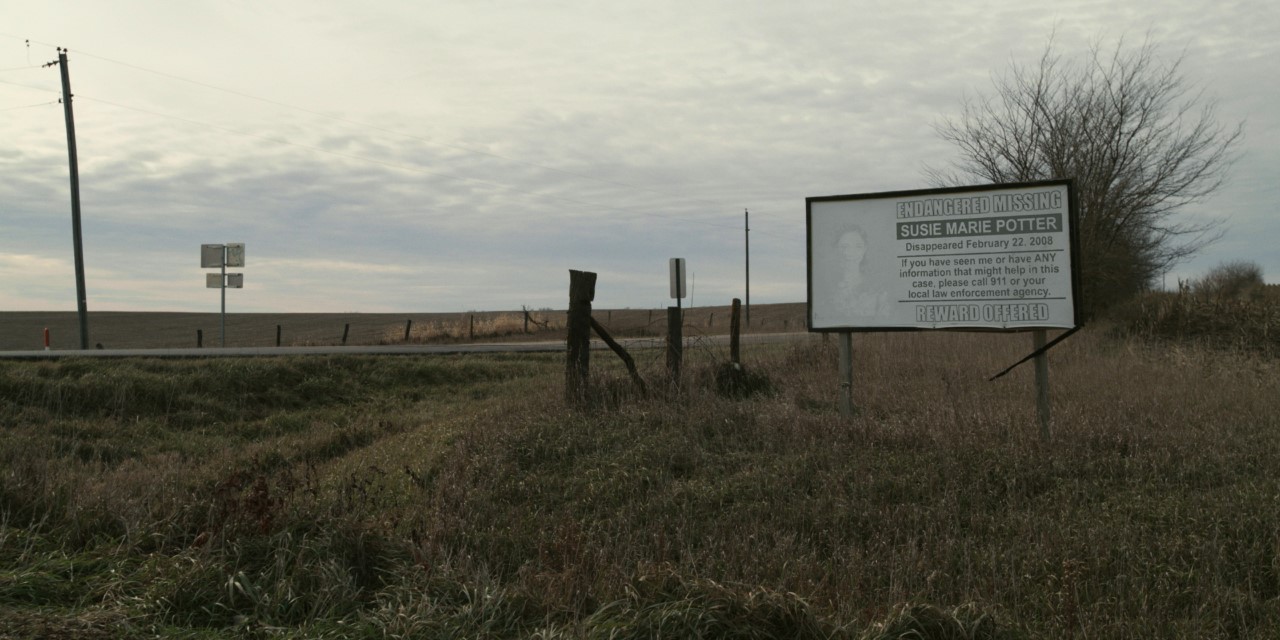
Skidmore has a population just under 300. Despite the small size, the town has had cycles of high-profile murders, violence, and disappearances. Many of these tales have inspired writers and television producers. The area is reminiscent of the towns in Maine that influenced some of Stephen King’s most beloved stories.
The 2001 cold case disappearance of Branson Perry heavily influenced Below the Fold. A faded billboard of Perry was sampled for the movie — filmmakers superimposed and manipulated other images onto the sign to make it Susie Potter’s missing person ad. The director felt using the original billboard’s location gave the film an extra layer of authenticity. He also said it’s haunting how the years go by and the real billboard image fades, deteriorates, and only an empty shell lingers there.
No sets were used in the making of the movie; the crew worked hard to scout out real locations. Clayton argued they may have tried to fit too many locations into the shooting schedule.
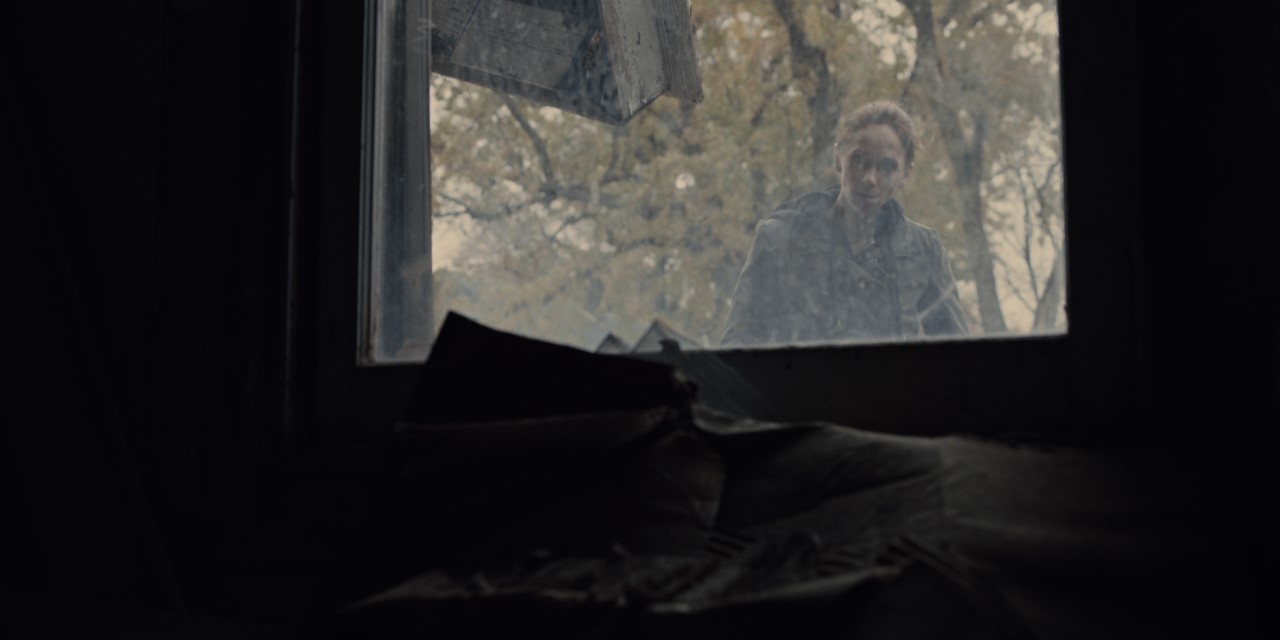
The town itself is a character. One of the actors told the director it was easy to get into the right emotion because Skidmore’s gray and overcast skies and abandoned properties spoke volumes. Shooting in fall and winter added to the foreboding feel the director wanted. Clayton mentioned it’s not easy to get to Skidmore:
“It’s not off a major highway, and it’s a tricky drive. The town knows when a stranger is there, and usually visitors come for one reason — because of the lore they have heard.”
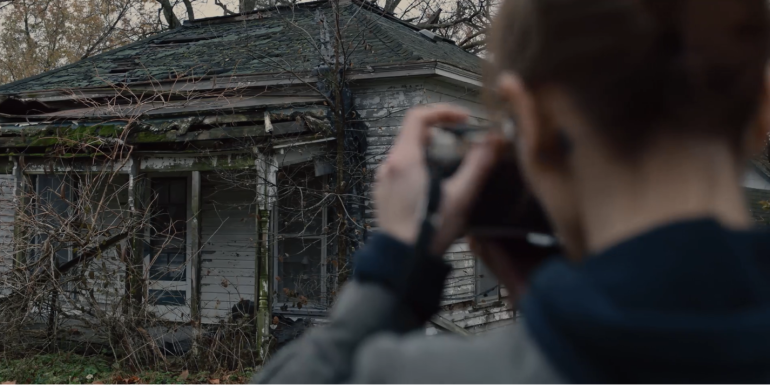
Clayton didn’t grow up in Skidmore, but close enough to hear stories about the small town. Several of his family members have connections there. A relative of his played with Bobbie Jo Stinnett as a child. Another person he knows reminisces on occasion about how he wanted to take Trena McCloud to prom before her life got mixed up with Ken McElroy.
Many of these tales growing up influenced Clayton’s perspective on the area. Before writing Below the Fold, he read up on everything about the rural community — from message boards, articles, novels, tales from townspeople, and the like. Clayton said people like Ken McElroy had a hold on the community and to this day just about everyone has a story about him.
“One big reason for why this Skidmore lore really hit home for me is not just the McElroy stuff — which is fascinating, but before my time. When those three crimes in the early 2000s happened, it was during a really impressionable time… 12 to 16 years old. And Bobbie Jo’s brutal crime really brought back the national attention to the area. And that really had an impact on my lifelong fascination with the town” Clayton said.
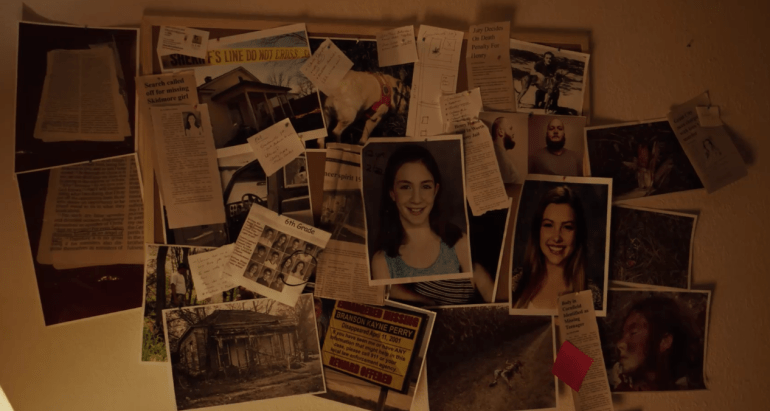
The hard work behind the scenes
Piecing together an independent movie takes a great deal of initiative and creative thinking. Clayton and his wife Sara Scott, who was an executive producer on the movie, used some of their savings for the movie budget. Through some connections with people in the KC film community, the ball started rolling. It took a couple of years, a few rounds of script drafts, and some tenacity to make it work. A tight skeleton crew filmed the movie on weekends starting in November 2017 and into the winter months.
“No one is going to just tell you to direct an independent movie. You have to buck up and make the $10,000 baby happen yourself” Clayton said.
Several people in Skidmore happily helped the crew, though Clayton said they did run into a couple of strange happenings. A woman yelled at them to get off her property when they were on a sidewalk. An officer also yelled at them for breaking into properties, which they told police wasn’t the case. Clayton said the officer appeared to have mixed them up with someone else who was getting into mischief.
Filming for Below the Fold wrapped up production just a couple of weeks ago. The filmmakers will submit it to film festivals across the United States and overseas. Those interested in seeing it will have to wait till next year.
Independent studio Rockhaven Films produced the movie. Below the Fold may remind viewers of similar Missouri centered movies or shows, like Winter’s Bone, Three Billboards Outside Ebbing Missouri, Gone Girl, Ozark, and The Act.
The movie includes performances from Sarah McGuire who plays Lisa Johnson and Davis DeRock as David Fremont. The three founders of Rockhaven Films worked on it as director of photography, Iain Trimble, editor Edward Schroer, and executive producer Josh Doke. Austin Wagoner produced and acted as assistant director. Clayton’s brother-in-law and sister, Andrew and Jessica Wigger, also worked as executive producers. Original music is by Ho-Ling Tang, production design and art direction by Kristin Yager Holland. Associate producers: Tyler Bachert, Danny Bowersox, Logan Compton, Carlin Larson, and Harrison Sissel.
Clayton is particularly happy with the cinematography and the performances of the actors. He said taking the extra time to focus on shots and do some old school film techniques helped give it the professional quality he wanted.
Clayton hopes to direct another movie again, but first he wants Below the Fold to pick up traction at film festivals. A large amount of resources, time, and labor went into bringing out the magic of Skidmore. Clayton wanted the reporters in the movie to have the right dialogue, so he consulted with Karra Small, a FOX4 News assignment editor. The journalists in the movie work at The Maryville Forum.
As for the story, Clayton said once he had a clear ending, the rest of the story fell into place.
Daily life in Skidmore
In reality, Skidmore’s lore is more in the backdrop of the community and more akin to chats at a bar or at a neighbor’s porch. True crime addicts love to talk about Skidmore and Nodaway County, but for natives of the town the harrowing tales bring a kind of dissonance. Many see the rural farming community as a safe place to raise children where they can roam and be free, climb some trees, eat fresh food, play on a rope swing or other rustic playground equipment. It’s a place where adults rise early to work on the farm, clock in at a factory, work at the dozen or so shops, or work in the town offices.

The current mayor of Skidmore, Tracy Shewey, has said before that she sees the dreadfully awful events in the town as isolated incidents. She said the following for a piece in the Missouri Life Magazine back in February 2018:
“Just because those bad things happened doesn’t mean the whole town and the whole community is bad. For newcomers, it does come up. And what we say is, ‘That’s not all that we’re about. We’ve had a couple of things that have been not so pleasant, but to us that doesn’t define the town. Please see past that. If you can’t, you’ve got to move on.'”
Skidmore origins and pastimes
William Bunton settled the area for Skidmore in 1840. He did this shortly after the Platte Purchase opened up land to settlement. Skidmore was platted in 1880 when M. Skidmore donated 20 acres to the Nodaway Valley Railroad Company.
The small town is about 45 miles north of St. Joseph. It has a few shops and restaurants from Backwoods Bar & Grill, Good Time Charlie’s, Countryside Café & Catering, Looks Salon & Day Spa, and Farmers Frame & Auto Repair. There is at least one bank, church, and a postal office. As of the 2010 census, about 285 people live in the city, residing in 122 households, and broken into 81 families. Demographics wise, it’s about 99.3% white, 0.4% Native American, and 0.4% listed as another ethnicity.

The infamous crimes and mysteries put Skidmore in the national light, but the daily run-of-the-mill activities are much more tame. The city council has worked hard the past few years to pass ordinances to keep yards tidier, the city sewage system needs updating, many of the adults work multiple jobs, neighbors bring cookies and help carry boxes for newcomers, and there is an effort to attract live music acts to venues. Skidmore is also full to the brim with fruit pies and fried chicken dinners.
One of the biggest pieces of news for the community this year wasn’t crime-related. Instead after years of rumors, the Skidmore Punkin Show finally returned. This past August was the first time the small farming community held a “Punkin Show” since 2004. Event staff wanted to bring back the festival as a way to unify families, children, and neighbors. Activities included musical acts, a barbecue cook-off, a horseshoe tournament, a cake walk, a pie-eating contest, tire throwing, skillet-throwing, and bingo.
Crimes and other mysteries
Nodaway County overall has a population of about 22,810. It was on the frontier in its earliest days and has a long history of violence. The first execution in the county took place in Maryville on July 22, 1881. The town hanged two brothers, Albert Talbott and Charles Talbott, after a court convicted them of killing their own father, Dr. Perry Talbott. The local physician, newspaper editor, and state legislator died on September 18, 1880 at his home in Arkoe, a town he helped co-found. He blamed his political enemies for his demise with his final dying breath. Nevertheless, authorities charged the sons with the crime, and despite their pleas of innocence — the jury didn’t see otherwise.
The brothers’ tombstone in the family cemetery is a vertical column with two hands clasped in friendship. The inscription reads: “We Died Inocent.” The word “innocent” is misspelled on the headstone.
The Ken McElroy shooting
A murder from the early 1980s first put Skidmore in the international spotlight. A man considered a town bully had upset too many people, and this led to a violent retaliation against him.
On July 10, 1981, Ken McElroy died in a rain of bullets. Investigators confirmed the shooting included at least two guns. McElroy was shot while sitting in his truck in front of the D&G Tavern. A crowd of about three dozen people witnessed the crime in broad daylight, but all of them denied seeing anything that would help police identify the culprits.
McElroy’s reputation far preceded him. He had a long list of offenses following him from theft, rape, child molestation, arson, hog and cattle rustling, burglary, and assault. In the months before his murder, McElroy was appealing a light sentence for shooting a 70-year-old grocer in the neck — he was out of jail on bond. Many of the townspeople were annoyed with the courts’ inability to properly deal with him and get him off the streets permanently. No one was ever prosecuted for McElroy’s murder. It’s an unsolved likely vigilante-style murder.
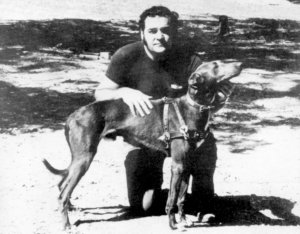
The man’s life doesn’t get anymore pleasant with closer examination. McElroy met his last wife, Trena McCloud, when she was an eighth grader at the shy age of 12. He fathered more than 10 children in his lifetime with different women and minors.
Trena became pregnant at the age of 14. She dropped out of school her freshmen year of high school and then moved-in with Ken and his third wife, Alice. Ken eventually divorced Alice and married Trena — in part to avoid charges of statutory rape.
Sixteen days after Trena gave birth, both she and Alice ran away to Trena’s mother’s and stepfather’s house. Court records indicate Ken found both Trena and Alice there and that he brought both of them back to his residence.
Sometime later Ken went back to Trena’s parents’ house. Realizing her relatives were not there, he shot the family dog and burned down the home.
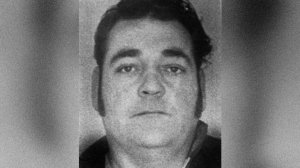
On July 9, 1984, Trena McElroy filed a $6 million wrongful death lawsuit against the Town of Skidmore, Nodaway County and its Sheriff Danny Estes, Mayor of Skidmore Steve Peters, and Del Clement. Trena accused the last person as the shooter in the crime. The case settled out of court by all parties for much less than what Trena was seeking: a sum of $17,600. No one admitted any guilt. Trena remarried and moved to Lebanon in southwest Missouri. She died of cancer on her 55th birthday on January 24, 2012.
Author Harry N. MacLean wrote about Ken McElory in his bestselling and award-winning book, In Broad Daylight. In 1991 a made-for-TV movie portrayed the events — although it was filmed in Texas.
The Ken McElroy shooting was also the focus of an episode on the A&E Network program City Confidential. It also served as story material for a Drunk History episode, as inspiration for a song by British hard-rock band UFO, a web series episode by BuzzFeed, and as fodder for multiple podcasts.
Death of Wendy Gillenwater
On October 16, 2000 Greg Dragoo beat and stomped on his girlfriend, Wendy Gillenwater. He dragged her down several country roads outside Skidmore leading to her death.
Detectives found Gillenwater’s body outside her home. An autopsy revealed someone had stomped on her brutally. Prosecutors charged Dragoo with murder. A Nodaway County Judge sentenced him to life in prison. He is currently incarcerated in the Western Missouri Correctional Center in Cameron.
The disappearance of Branson Perry
On April 11, 2001, 20-year-old Branson Perry vanished from his father’s home in Skidmore. Someone last saw him walking from the house to a storage shed.
No one has ever been charged in his disappearance, but there has been at least one suspect: Fulton resident Jack Wayne Rogers. He is in prison now for other crimes. Rogers did at one point brag about murdering Perry. He later denied ever knowing him.

Rogers appeared like a lawful, good citizen. He was a Presbyterian minister and a Boy Scouts leader, but he had many disturbing secrets. Officers arrested Rogers on child pornography and obscenity charges, as well as first-degree assault, and practicing medicine without a license. His troubles came to light when he removed a trans woman’s genitals in a makeshift gender reassignment surgery at a hotel in Columbia, Missouri. The operation, as you would expect, didn’t go well. Rogers couldn’t stop the bleeding and the woman called 9-1-1.
While investigating Rogers’ personal belongings, police discovered child porn on his computer. Detectives also found message boards where Rogers graphically described torturing and assaulting multiple men.
Rogers claimed all the posts were only macabre fantasies. One of those posts described picking up a blond male hitchhiker, then raping, torturing, and murdering him. Rogers also wrote about burying the body somewhere in the Ozarks. While performing a search at Rogers’ property, detectives found a turtle claw necklace resembling one Perry used to wear.
A court sentenced Rogers to 17 years in prison for assault on the trans woman and seven years for performing illegal surgery. He also received 30 years for child pornography. At his sentencing, Perry’s mother, Rebecca Klino, pleaded for Rogers to reveal what he did to her son. Rogers again denied any involvement in the young adult’s disappearance. After the sentencing, Klino said she no longer believed Rogers was responsible for her son’s disappearance:
“The police are not completely ruling him out, but now the investigation has turned toward Skidmore again. They have received new leads there. I suppose time has a way of unraveling secrets. I believe someone in that area knows what happened to Branson. In my heart, I don’t believe this suspect is responsible. Despite the nightmare I lived through [at his sentencing], I am thankful that someone with that much evil will never walk the streets again.”
Sadly, both of Perry’s parents died a handful of years after he disappeared. Bob Perry died in 2004. Rebecca Klino died in February 2011 after battling melanoma cancer. In her obituary, it noted that Klino was “preceded in death” by her son. She was buried beside an empty plot for Perry. It lists his date of death as April 11, 2001, the same day he vanished.
Murder of Bobbie Jo Stinnett
On December 16, 2004, Skidmore once again received national attention when Bobbie Jo Stinnett, a relative of Branson Perry, was murdered. She was eight months pregnant at the time and someone had cut her unborn baby from her womb.
After an extensive search aided by the public, police found the baby alive at a farmhouse in Melvern, Kansas. Police arrested Lisa Montgomery; she eventually received a federal death sentence for killing Bobbie Jo.
The baby, Victoria Jo Stinnett, survived the attack and kidnapping. She now lives with her father, Zeb Stinnett. Victoria Jo is 14 years old.

Before the murder, Bobbie Jo and Zeb ran a dog-breeding business from their home. Montgomery met Stinnett online in a rat terrier chatroom called “Ratter Chatter.” Stinnett was expecting buyers for a terrier about the time of her murder. In messages, Montgomery told Stinnett she too was pregnant and excited about motherhood. The women happily chatted online and exchanged emails about their pregnancies. Authorities believe Montgomery, posing as “Darlene Fischer” arranged to meet with Bobbie Jo at her home on December 16, 2004 — the day of the murder.
Montgomery’s former husband testified in court that she had a history of falsely telling strangers and new acquaintances she was pregnant — and this was after she had her tubes tied in 1990. Her doctor recommended she undergo the surgery after her fourth child was born two months premature.
Police said Montgomery and her current husband Kevin showed off Stinnett’s baby as their own in Melvern before her arrest. Kevin said he had no part in the killing. He also testified about fake pregnancies during the marriage. He said Montgomery told him she got an abortion for a fetus in New Mexico. The second fake pregnancy, she told him something was wrong with the baby and she donated it to science. He claimed he didn’t realize at the time that these were lies.

Lisa Montgomery is currently the only woman with a federal death sentence incarcerated at Federal Medical Center, Carswell in Fort Worth, Texas.
New and emerging technology aided in the investigation. An issued AMBER alert enlisted the public’s help in finding the baby, DNA testing confirmed the infant’s identity, and an enormous amount of media attention helped bring in tips.
Author Diane Fanning described the case in her book Baby Be Mine and M. William Phelps described it in his novel Murder in the Heartland.
The case was also featured in the 5th episode of the documentary No One Saw A Thing. The documentary just premiered on the Sundance Channel on August 29, 2019.

